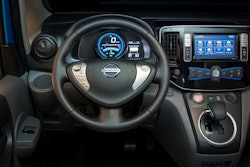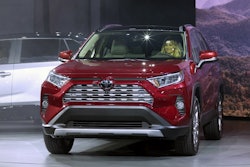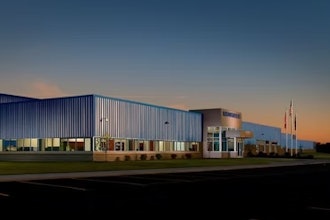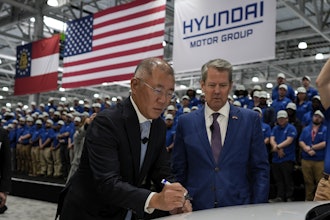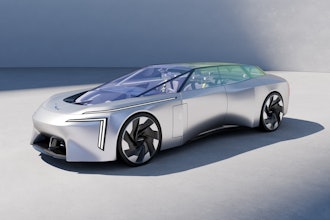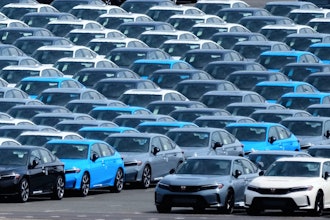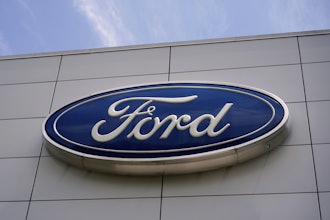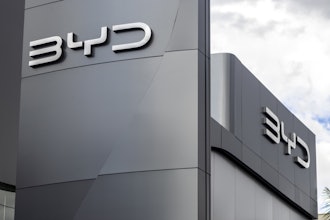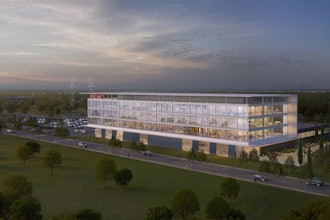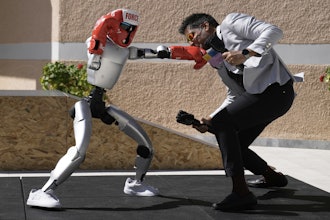The automobile won’t turn 150 years old until 2036, yet some members of the automotive industry already are planning to mark the occasion by developing a factory that revolutionizes how vehicles are manufactured.
As sentimental as members of the Stuttgart, Germany-based ARENA2036 consortium (ARENA stands for Active Research Environment for the Next Generation of Automobiles) may be about the automobile, instead of dwelling in the past, they’re looking into the future. The 30-member consortium, which includes familiar names like Bosch, Daimler, Hewlett Packard, Siemens and John Deere, is in the early stages of designing a highly efficient, versatile and robot-centric pilot factory capable of producing modular, lightweight vehicles. Their goal is to unveil the “radical, new, and holistic production concept” in 2036.
That concept involves using lightweight materials to manufacture automotive components with integrated functionality, in large series quantities, and to do so sustainably and economically, with the capacity to handle numerous product variants. Such a factory would thus be able to produce pure electric, hybrid and fuel cell-powered vehicles concurrently.
While it’s too early to predict exactly how the ARENA2036 factory will turn out, there’s a strong likelihood it will incorporate iterations of some of the digital technologies that even today are reshaping how automobiles are manufactured. Indeed, to stay relevant and gain a competitive edge, auto manufacturers are embracing Industry 4.0 technologies — solutions that digitize the entire value chain — in order to increase the pace of innovation, optimize operations, integrate with technology and supply partners, and strengthen customer relationships.
“The auto industry is never static and can change instantly,” observes Jim Taylor, chief revenue officer at Karma Automotive (formerly Fisker Automotive), a California company that builds luxury solar-electric-gasoline hybrid vehicles. “It’s important for us to keep pace or, better yet, stay at the forefront of this evolution.”
As new and potentially game-changing as the five Industry 4.0 technologies detailed below are here in 2018, who knows where they will have taken automobile manufacturing come 2036?
1. Smart small-scale factories. Led by newcomers such as Karma and Local Motors, auto manufacturers are using much smaller, highly digitalized factories to execute on their big transportation ideas. Karma’s manufacturing plant, purportedly the first in the U.S. to follow a mini-plant business model developed by European luxury automakers, can manufacture cars cost-effectively at a low production volume, using smart manufacturing approaches to automate processes end-to-end, from supply through delivery. A platform of cloud-based digital solutions connects every aspect of Karma’s business in real-time, so the company maintains a single version of the truth across finance, sales, purchasing, manufacturing, quality, supplier quality and engineering.
Meanwhile, Arizona-based Local Motors is producing its Olli driverless shuttle microbuses via a global network of microfactories in the U.S. and Europe that, the company says, can be set up in a matter of weeks. Using 3D printing and other advanced digital production techniques, the company says it can build the 13-foot electric-drive buses 24 times faster than traditional manufacturing processes. The first Olli units are expected to begin pilot programs sometime this year.
2. 3D-printing. Local Motors claims to be the first to 3D-print a vehicle, but it’s far from the only company using the technology to enhance manufacturing speed and customization capability. Through a process it calls direct digital manufacturing, Local Motors can produce parts directly from a CAD file, eliminating investments in tooling, reducing lag time between design and production, and eliminating redesign costs.
Technologies such as 3D printing aren’t solely the domain of upstart companies. Daimler is employing 3D printing and additive manufacturing for rapid prototyping, such as to build sand-cast molds for engines.
3. Digital twin. A digital pioneer among traditional automakers, Daimler is among the first of its peers to use digital twin technology in auto manufacturing. Digital twin technology pairs the virtual and physical worlds, using data from sensors, computers and equipment connected to the Internet of Things to map processes and systems in real time. Data produced by a digital twin can help manufacturers evaluate technical feasibility long before series production begins. It also can help identify potential production and quality issues before they occur, along with potential efficiency gains in the production process.
4. Co-creation/open-platform development. On its website, Local Motors issues an open invitation for open innovation — that is, it is crowd-sourcing input from its community of partners, suppliers and customers “to help identify product ideas, pain points, and new technologies that align with our vehicle development vision.”
Supporting the open-source approach is a SaaS platform, Launch Forth. That platform not only enables the company to solicit and gather ideas from its network, it provides a cloud-based framework for moving the most intriguing ideas through testing, prototyping and production.
5. Responsive manufacturing. By connecting data-driven Industry 4.0 digital technology on the shop floor and in the supply chain intelligently to the rest of the enterprise, manufacturers gain the ability to adjust and respond on the fly to short-term demand and supply fluctuations, customization requests and manufacturing issues that are causing problems with vehicles in the field.
Using Internet of Things technologies in tandem with powerful high-speed enterprise-management platforms, automakers now can capture and analyze the vast amounts of data they get from their factories and their vehicles to gain real-time visibility into every aspect of their manufacturing operations. Then, using Industry 4.0 manufacturing solutions, they can respond appropriately and quickly.
Say real-time data collected from vehicles in the field helps a manufacturer flag a recurring problem with a malfunctioning window on a certain vehicle model. Once the manufacturer pinpoints the root of the problem, it can use analytics and machine learning tools in the factory to subtly adjust production specs for the malfunctioning window part, then create a digital twin of that part to determine if the adjustments will in fact fix the issue. What’s more, because its entire enterprise is digitally connected, the manufacturer can proactively reach out to car owners to arrange to address the window issue, avoiding problems before they escalate and garner unwanted attention.
These are Industry 4.0 solutions to meet today’s auto manufacturing challenges. Come the car’s 150th birthday in 2036, chances are we’ll be talking about a very different set of challenges, and a whole new set of Industry 5.0 (or 6.0?) solutions to meet them.
Pradeep Amladi is vice president and global marketing head for the manufacturing, energy and natural resources industries at SAP.





